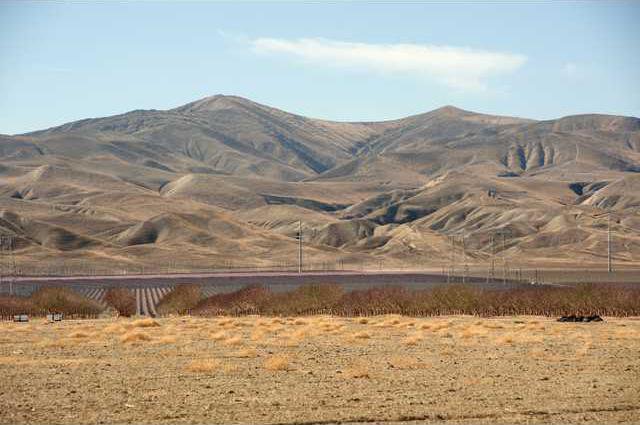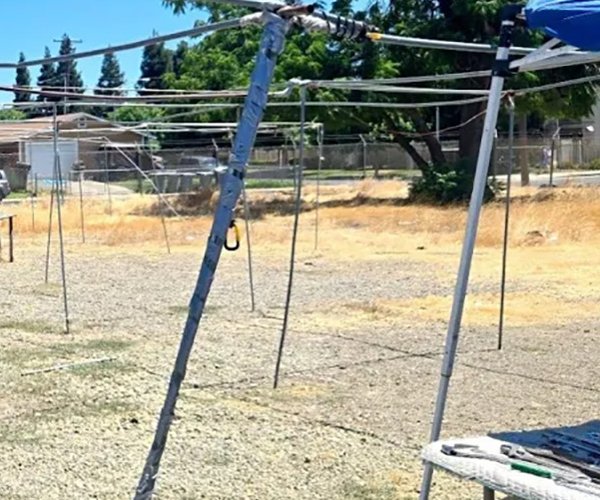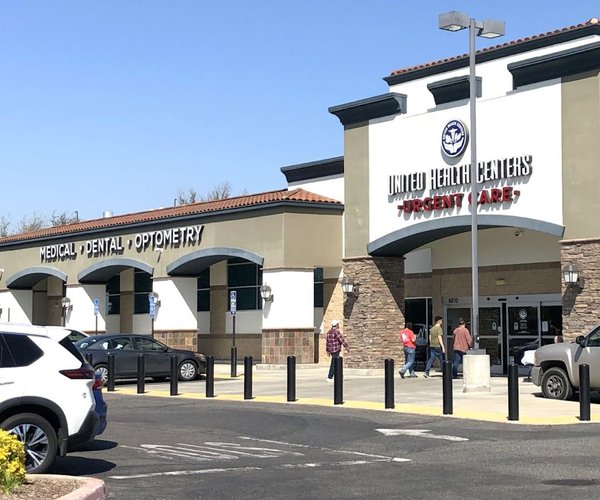Stanislaus County Supervisor Vito Chiesa is used to working with his fellow supervisors to make sure the needs of District 2 - which includes Turlock, Keyes, Hughson and Denair - are being fairly represented. This week, however, Chiesa is in Washington, D.C. talking with federal officials and legislators about a number of issues important to the entire San Joaquin Valley.
Chiesa is one of 15 elected officials from the eight counties that make up the San Joaquin Valley Regional Policy Council who are currently in Washington as part of the group's annual "Valley Voice" advocacy trip.
This year, Valley Voice is focusing on transportation funding and rules, federal air quality regulations and water supply.
During his time in Washington, Chiesa has been focusing his efforts on opposing the Metropolitan Planning Organizations Coordination and Planning Area Reform rule, proposed by the Federal Highway Administration and the Federal Transit Administration on June 27.
While the goal of the proposed revisions is unified regional transportation planning, the result would be troublesome for specifically Stanislaus and Merced counties, according to Chiesa. If adopted, the revision would force the Stanislaus Council of Governments (StanCOG) - the current MPO responsible for allocating federal transportation funding in Stanislaus County - and the Merced County equivalent (MCAG) to develop a single regional transportation plan.
Chiesa said that Stanislaus and Merced county officials are perplexed about why the federal government would choose these specific two Valley counties to be part of the proposed new urbanized area unified planning rule. Stanislaus and Merced counties have different priorities and the two regions don't have a unifying purpose like the Bay Area or Southern California does.
"We're already dealing with Merced County with the air basin and buses. Where it makes sense we're already doing it and where it doesn't we're not," said Chiesa.
While traveling across the country to submit a comment on federal policies and regulations may seem daunting, the personal advocacy is worth the miles, said Chiesa.
"You're either here as part of the conversation, or you're not part of the conversation. It's good to put a face on it, tell them about our real problems with it," he said. "When we come back here collectively with one voice, it's a lot easier to move the needle rather than just one person."\
Other Valley Voice priorities:
• Federal Transportation Grant Applications: The Federal Highway and Federal Transit administrations should consider a community's "economically disadvantaged" status as a major criterion for grant funding. Congress should consider amending the FAST Act to provide for "mid-range" applicants under the FASTLANE and TIGER programs specifically for those municipalities or counties between 200,000 and 1 million in population. Despite a collective population of more than 4 million people today, which is expected to grow to more than 5.4 million, or 26 percent of state population by 2050, jurisdictions in the San Joaquin Valley routinely have their projects overlooked during the competitive grant process for the TIGER and FASTLANE programs, both by Caltrans and the Federal Highway Administration.
• Goods movement: 1. Support FAST Act discretionary freight programming (FASTLANE) for regionally significant projects in the San Joaquin Valley. The San Joaquin Valley Interregional Goods Movement Plan, finalized in 2013, highlighted how freight movement is a vital component of the San Joaquin Valley's diverse economy that significantly plays a major role in the distribution of agricultural materials throughout California, the United States, and the world. The Plan is being updated in 2016-17 with additional analysis for priority rural corridors and first-and-last mile connectors.
• Reduction in emissions sources under federal control: Support the San Joaquin Valley Air Pollution Control District petition requesting that EPA adopt new national standards for on-road heavy-duty trucks and locomotives under federal jurisdiction. Establish a National Clean Air Investment Fund to accelerate the deployment of low-emission vehicles in a timeframe that will allow the Valley to meet National Ambient Air Quality Standards, protect public health, and avoid federal sanctions that will have a devastating impact upon the region.
• Clean Air Act modernization: Support HR 4775-Ozone Standards Implementation Act of 2016 and S 2882-Ozone Standards Implementation Act of 2016 that contain elements of the Valley's Clean Air Act Modernization proposal: 1. When a new standard is published, the old standard for that pollutant should be subsumed. States should be allowed to develop a single attainment plan that harmonizes increments of progress and other milestones without allowing for any rollback or backsliding; 2. Establish deadlines and milestones, the Act should be amended to require control measures that lead to the most expeditious attainment of health based standards while taking into account technological and economic feasibility; 3.The Act should be amended to allow states to focus efforts on meeting new standards in the most expeditious fashion through deployment of scarce resources in a manner that provides the utmost benefit to public health; 4. The Act should be amended to eliminate the requirement for contingency measures in areas classified as "extreme" non-attainment by EPA; 5. The Act should be amended to allow states to take credit for all transportation control measures and strategies and not punish areas that have implemented transportation control measures and strategies that have achieved early reductions in emissions.
• Regional Transportation Plans: Change adoption of plans from 4 to 8 year cycles.
• Farm to Market Routes: Provide special funding for rural roads that are used by dairies for daily farm to market shipping through a set aside in the next Transportation or Farm Bill.
• Water quality, supply and reliability: Urge federal legislators and the Administration to immediately take action to improve California's water supplies, while also respecting California's long-standing principles of water rights priorities. Call on Administration officials to work with their legislative colleagues to develop and implement comprehensive plans that address water supply, reliability and affordability today and for future generations. A successful water plan must include additional storage such as the Temperance Flat Dam and the Sites Reservoir projects.









